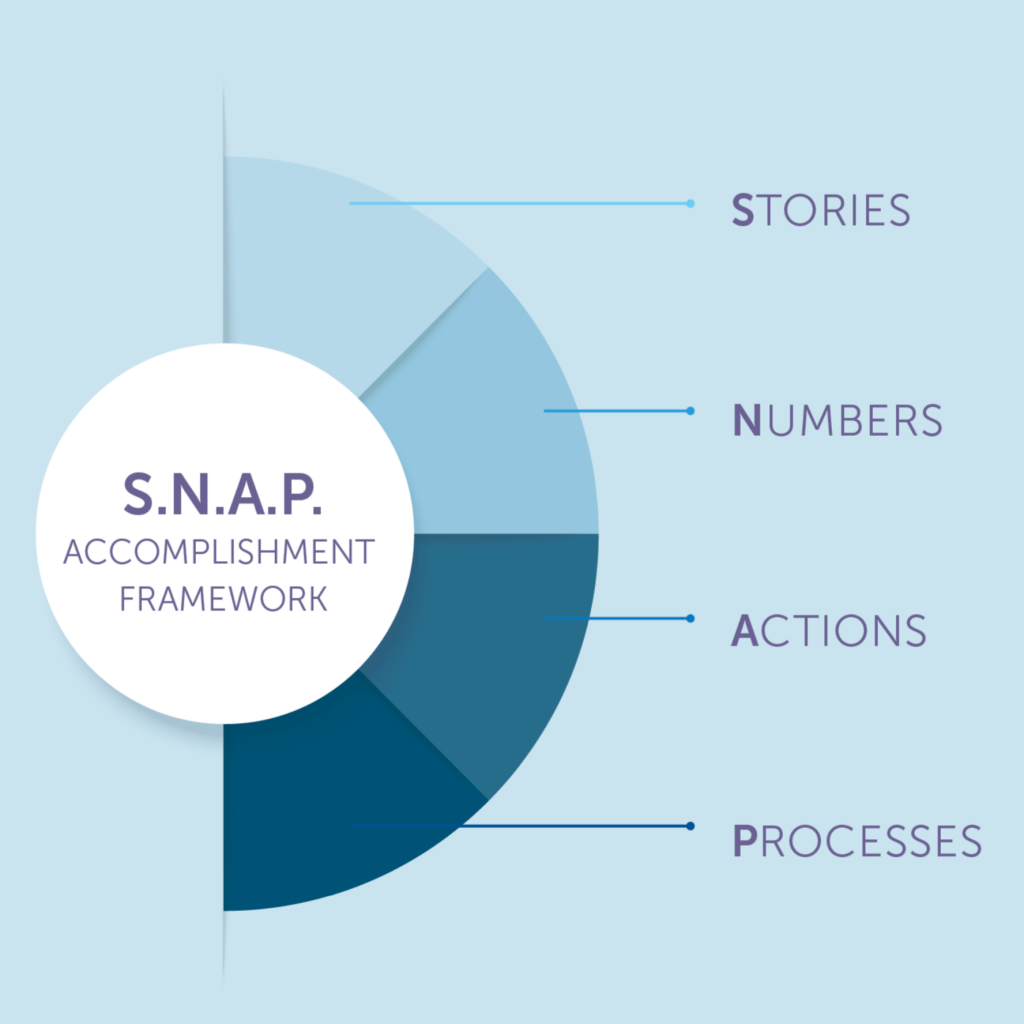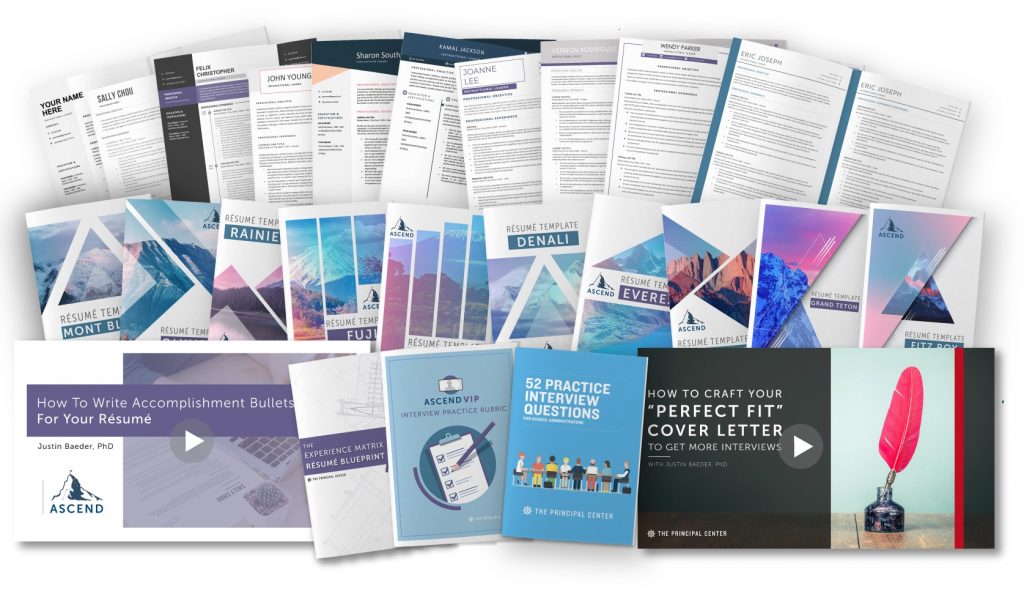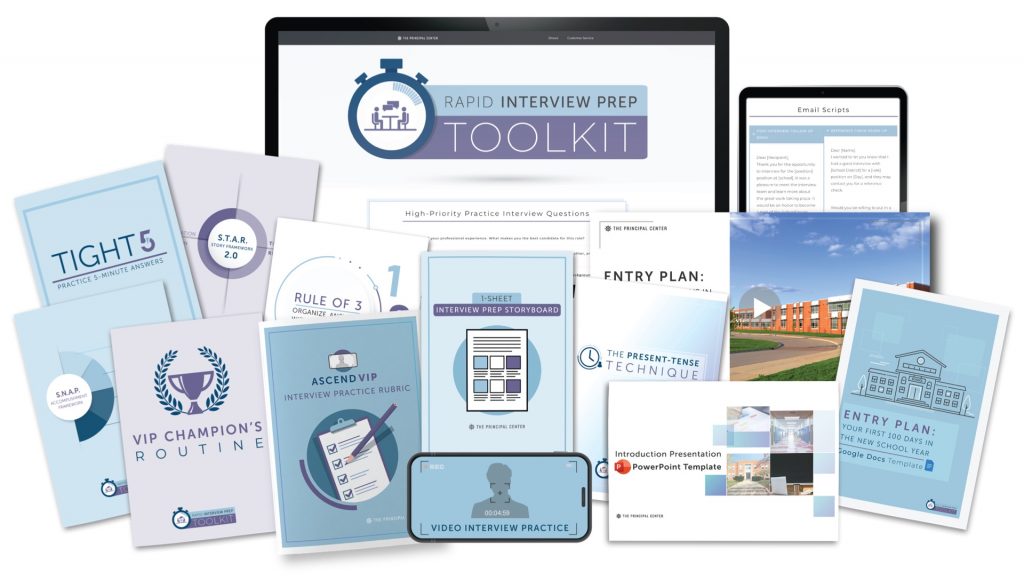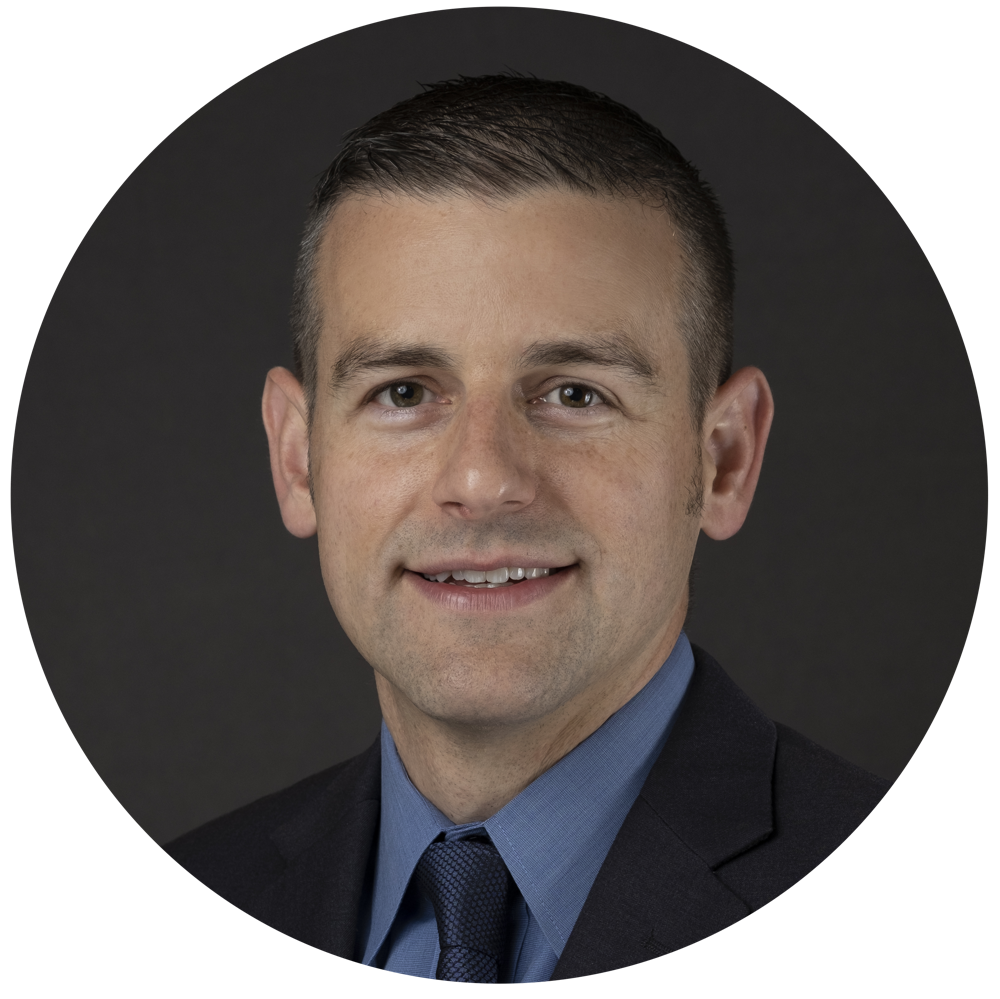Your résumé is your foot in the door in the hiring process. Revise it with these tips now, so you're ready for principal and assistant principal job openings.
By Justin Baeder, PhD

Why Your Résumé Matters
While many of your application documents will be skimmed quickly—or even ignored completely—your résumé is guaranteed to get a careful look.

Why?
Because it contains the information the hiring committee wants more than anything else: your experience.
Screeners want to know:
- What kinds of jobs have you held?
- What have you accomplished in those roles?
- Where have you worked, and for how long?
Each of these questions provides a different type of information that the hiring committee uses to decide which candidates to invite for interviews.
Want to know exactly what to include in your résumé? Download the Résumé Blueprint.
Relevant Experience
Knowing what jobs you've held—the specific roles, such as assistant principal, dean, or teacher—gives the reader a sense of whether you're seeking a lateral move or a promotion.
If you're seeking a promotion, don't be shy—go for it. Be clear about your work history, and show why you're ready for greater responsibility.
Too often, candidates try to mask their current role by listing a “Leadership Experience” section first, then a “Teaching Experience” section below, hoping to hide the fact that they're currently in a teaching position. Don't make this mistake.
Organize your work history in reverse-chronological order—most recent first. Don't split it into separate “Leadership” and “Teaching” sections. This won't fool anyone, and will only confuse the reader.
If the reader is confused about your work history, they'll put your application in the “NO” pile.
You'll be more likely to land an interview if you're making a lateral move, but even if you're looking to move up, you can show that you're ready by showcasing your accomplishments.
Accomplishments, Not Duties
Be sure not to waste space on predictable duties—for example, if you're an assistant principal, don't just say “Handled discipline” as if that's something special.
All assistant principals handle discipline. What have you accomplished that makes you stand out from the crowd?
In the Rapid Interview Prep Toolkit, we use the acronym SNAP to translate routine duties into specific accomplishments:

For example, rather than list “Handle discipline” and “Oversee transportation” on your résumé, turn these responsibilities into vivid accomplishments by identifying specific stories, numbers, actions, and processes—which you can also use in your cover letter and interviews:

In the short term, you can't change your experience. For this hiring season, it is what it is.
But if you replace duties with accomplishments, your résumé will instantly become more vivid and compelling.
You'll rise above other candidates with similar experience, simply by making it clear why you're ready for more responsibility.
Learn more: Rapid Interview Prep Toolkit
Work History—Don't Confuse The Chronology
Screeners want to know where you've worked, and for how long. This gives them a sense of your experience, as well as hints about who you've worked with.
In the hiring process, people rely on their professional networks for information and recommendations.
If you've worked with someone known to the screener, that person is likely to get a call for an informal reference check, even if you didn't list them as a reference.
Read: Recommendation Letters for School Administrators: A Guide for Candidates & Their References
If you present your work history in a confusing or misleading manner—for example, by presenting a job you held years ago as if it's your current role—these informal reference checks will instantly land you in the “NO” pile.
Again, this is why it's so important to make your work history clear by:
- Listing each role you've held, most recent first—in reverse-chronological order
- Including the dates and work locations for each role
- Surprising the reader with your accomplishments, instead of boring them with predictable duties
Organizing your résumé any other way—for example, by listing “Leadership Experience” separate from “Coaching Experience” and “Teaching Experience”—will only confuse the reader.
And the confused reader puts you in the “NO” pile.
For example, if you did your admin internship 10 years ago, then continued as a classroom teacher, it's tempting to list your internship experience first, then teaching experience further down. Don't fall into this trap.
Instead, list the distinct roles you've held clearly and in order—newest to oldest—and highlight the accomplishments in each role that signal your readiness for greater responsibility.
Explain Gaps In Your Résumé—Don't Hide Them
Candidates often try to hide gaps in their work history by organizing their résumés non-chronologically.
This may seem like the easy way out, but it's just an easy way to ensure rejection.
If you have gaps in your work history—for example, if you've taken time off due to family or health reasons—this information will be of great interest to the reader, and it's your job to frame it positively.
Trying to hide gaps by making your overall work history confusing will only make things worse.
For example, if you taught for 10 years, with an admin internship in your 9th year of teaching, then stayed home for 5 years while your kids were young, then went back to the classroom, your résumé's headings might look like this:
Language Arts Teacher, Laguna Middle School, 2021–Present
Principal Intern, Riverside Elementary, 2015-2016
Language Arts Teacher, Lakeside High School, 2007-2017
Since the admin internship occurred during the 10-year tenure as a high school teacher, it's OK to list it first. It'll be clear that you continued as a high school teacher during this time.
The gap between 2017 and 2021 will be clear to the reader, and clarity is our first priority.
If you want to provide explanations for gaps in your work history, the best place to do so is in your cover letter.
The Cover Letter: Your Résumé's Essential Companion
Your résumé shouldn't stand alone—it should always be accompanied by a well-written cover letter that connects the facts in your résumé into a coherent story.
When explaining gaps in your work history, it's best to do so briefly and in passing.
For example, you might explain time at home with your children as:
“Since returning to teaching when my youngest child started school, I have found a renewed passion for instructional leadership.”
There's no need to belabor the explanation—you don't need to justify time away. Just be sure to give the reader enough information that it won't cause them to wonder.
You can expect the reader to skim your résumé first, then look at your cover letter to see if anything jumps out.
Since applicants often put very little effort into their cover letters, readers may not be accustomed to finding much value in reading them.
But a well-written cover letter can make all the difference in the world.
That's why our Ed Leadership Job Application Template Bundle contains matching résumé and cover letter templates.

But don't just make your résumé and cover letter look alike—make them work together to paint the picture of your qualifications.
Quick Fixes for Your Résumé
You can't gain new experience quickly, but you can get more out of your experience by revising your résumé with these tips.
1. Fix confusing chronology
As we discussed above, you'll want to organize your work history in reverse-chronological order, with the most recent roles first.
If you've lumped categories of experience together, rather than divide it into sections for each role you've held, fix this now.
2. Turn duties into accomplishments
Use the SNAP Accomplishment Framework to make your experience more vivid.
Instead of listing the predictable duties you've performed, share Stories, Numbers, Actions, and Processes, as we discussed earlier.
3. Ditch boring, ugly templates…but don't get too wild
There's no excuse for using the templates built into Microsoft Word (or no template at all).
Everyone else uses these built-in designs, and your goal is to stand out, not blend in.
But don't go to the other extreme, either. Many of the templates available online are made by graphic designers for graphic designers seeking jobs as designers, not educational leaders.
For example, a template like this isn't a good fit for school admin positions:
Specifically:
- Don't include a photo of yourself
- Don't try to fit everything on one page
- Provide much more detail about your accomplishments in each role
Instead, use a fresh, professional-looking template that reflects the gravity of the role.
For example, the Everest résumé and cover letter template from our Ed Leadership Job Application Template Bundle is distinctive, but not too wild:

4. Add detail, but cut the fluff
Conventional wisdom says to limit your résumé to one page, but this is terrible advice for educational leadership roles.
If you've been in the profession long enough to be ready for an administrative position, you have too much experience to convey in a single page.
Two pages is normally plenty, but if you've served in a large number of roles, you may need a 3rd page, which may also include your references.
For each recent role you've held, list 4-6 detailed accomplishment bullets (7 at most).
For older roles, you can provide less detail—especially if the experience is less relevant to the job you're currently seeking.
But don't include information about:
- Hobbies and personal interests—these are not relevant and can be distracting
- Skills and areas of expertise—these appear as unsupported claims, so work them into your accomplishment bullets instead
5. Include a professional objective
At the top of your résumé—right below your contact information—state what you're looking for in a concise professional objective:
Experienced educational leader seeking a 6-8 principalship in a diverse middle school where I can apply my passion for building collaborative, student-centered teams.
Note the following elements of a good professional objective:
- A phrase characterizing yourself, without making unsubstantiated claims—it's OK to characterize yourself as “experienced” since your experience is listed below, but don't call yourself a “visionary, transformational” leader or otherwise praise yourself here.
- A clear indication of the role you're seeking—customize this for each application. Be specific—say “principalship,” not “leadership role” if you're applying for a principal position.
- The context you're seeking to work in—again, customize this for each application.
- The impact you intend to make.
The purpose of this customization is to show that you're the right fit for the job—that you're looking for this specific type of opportunity, not just any old job opening.
The trick here is to balance specificity with believability—you don't want to make the reader skeptical by making extraordinary claims in your objective.
Want to know what order the sections of your résumé should appear in? Download the Résumé Blueprint.
6. Include References
Don't say “References available upon request.” Include them at the end of your résumé, in the same document.
(This is a great way to fill unused space on the last page of your résumé—or if your résumé already fills its pages nicely, include references as an additional page, but in the same file.)
Chances are good that the screener will know someone who's worked with you.
Make it easy to call the people you want to serve as references, by listing their work and personal cell numbers in your reference list.
7. Proofread—and get help spotting typos
Like it or not, typos will discredit you. Make sure your résumé is free from spelling, grammar, and punctuation errors.
The public expects good writing from the institutions entrusted with teaching their children to read and write, so screeners will look askance at any typos in your résumé.
Yes, you're more than a piece of paper…but this is your only foot in the door. Don't waste it.
Earn the right to an interview by ensuring that your résumé and cover letter are flawless.
After looking over your own documents for hours, you'll become blind to any remaining typos, so be sure to get help with this.
Have several trusted friends or relatives look over your materials. Non-educators may be less familiar with educational jargon, so it may be easier for them to spot typos in words that educators would just gloss over.
Get at least two people who are excellent writers to review your résumé before sending it in, and use spellcheck and grammar check, too.
8. Comb through your archives for work you've forgotten
Chances are good you've forgotten some experience that would be worth mentioning in your résumé.
To find the hidden gems in your work history, look through:
- Old folders on your computer—we tend to make folders for major projects
- Trainings and multi-day events on your calendar, as far back as you can go
- Books and binders on your shelf, reflecting topics you've invested in learning
- Your email and phone contacts, which may remind you of work you've done together
9. Keep a mega-list of all trainings
This list will be too detailed to include in your résumé, but you won't regret keeping a big list of every training, conference, and professional development session you lead or attend.
If you're ever asked to provide a Curriculum Vitae (C.V.) for working in higher education, submitting a book proposal to a publisher, or leading a paid speaking or training opportunity, you'll be glad you have this information on hand.
Keep this mega-list up to date, and review it to make sure you've mentioned the most relevant items in your résumé and cover letter.
10. Remember: this is a competition
Lastly, keep in mind that your résumé isn't just providing factual information—it's helping you make the argument that you're a better candidate than your competition.
Professional athletes know they can't just be good—they have to be better than the competition.
There is no off-season for pros. It's never too early to begin improving your résumé, and you're never finished—until you get the job you're looking for.
Take The Fast Track
If you'd like a head start in crafting the ultimate résumé, get the Ed Leadership Job Application Template Bundle:

And if you've already made it past the paper screening process and have an interview coming up, download the Rapid Interview Prep Toolkit.


About the Author
Justin Baeder, PhD is Director of The Principal Center, where he helps senior leaders in K-12 organizations build capacity for instructional leadership by helping school leaders:
- Confidently get into classrooms every day
- Have feedback conversations that change teacher practice
- Discover their best opportunities for student learning
He holds a PhD in Educational Leadership & Policy from the University of Washington, and is the host of Principal Center Radio, where he interviews education thought leaders.
His book Now We're Talking! 21 Days to High-Performance Instructional Leadership (Solution Tree) is the definitive guide to classroom walkthroughs, and his book Mapping Professional Practice (with Heather Bell-Williams) helps instructional leaders create instructional frameworks to establish shared expectations for practice.

